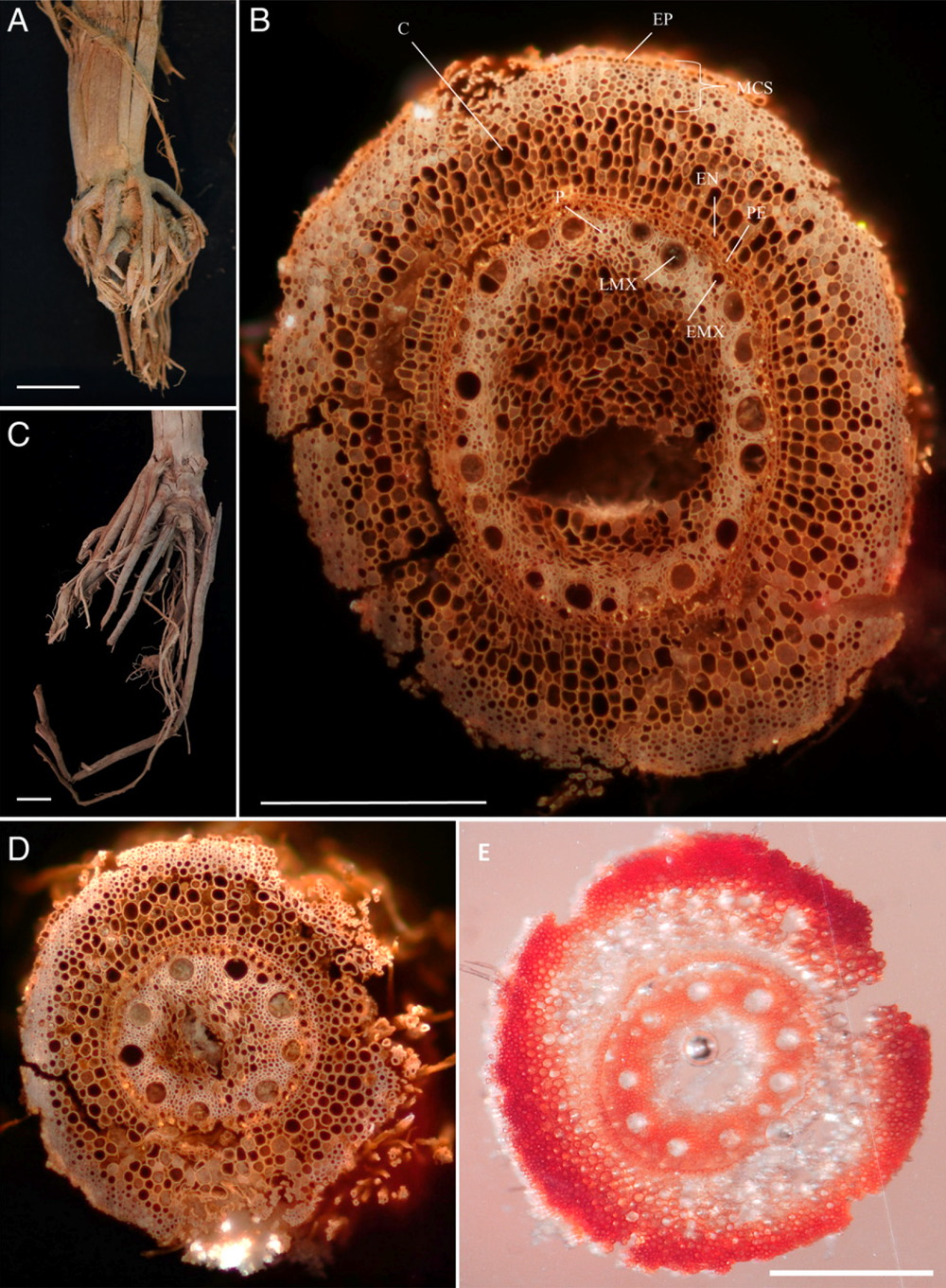
Laser ablation tomography of roots
Authors
Lopez Valdivia Ivan Alden Perkins, Hannah Schneider, Miguel Vallebueno-Estrada, James Burridge, Eduardo González-Orozco, Aurora Montufar, Rafael Montiel, Jonathan Lynch, Jean-Philippe Vielle-Calzada
Source
PNAS 2022 Vol. 119 No. 17 e2110245119
Download Options
www.pnas.org with DOI number 10.1073/pnas.2110245119
Abstract
Efforts to understand the phenotypic transition that gave rise to maize from teosinte
have mainly focused on the analysis of aerial organs, with little insights into possible
domestication traits affecting the root system. Archeological excavations in San Marcos
cave (Tehuacan, Mexico) yielded two well-preserved 5,300 to 4,970 calibrated y B.P.
specimens (SM3 and SM11) corresponding to root stalks composed of at least five
nodes with multiple nodal roots and, in case, a complete embryonic root system. To
characterize in detail their architecture and anatomy, we used laser ablation tomography
to reconstruct a three-dimensional segment of their nodal roots and a scutellar node,
revealing exquisite preservation of the inner tissue and cell organization and providing
reliable morphometric parameters for cellular characteristics of the stele and cortex.
Whereas SM3 showed multiple cortical sclerenchyma typical of extant maize, the scutellar
node of the SM11 embryonic root system completely lacked seminal roots, an attribute
found in extant teosinte and in two specific maizemutants: root with undetectable
meristem1 (rum1) and rootless concerning crown and seminal roots (rtcs). Ancient DNA
sequences of SM10—a third San Marcos specimen of equivalent age to SM3 and
SM11—revealed the presence of mutations in the transcribed sequence of both genes,
offering the possibility for some of these mutations to be involved in the lack of seminal
roots of the ancient specimens. Our results indicate that the root system of the earliest
maize from Tehuac an resembled teosinte in traits important for maize drought
adaptation.

